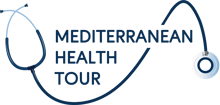Fertility
Spain is the leading European power in assisted human reproduction and third in the world. According to data from the Spanish Fertility Society (SEF), there are more than 300 establishments (public and private) throughout Spain.
At the end of 2017, more than 34,000 artificial insemination procedures and more than 14,000 IVF cycles were carried out on patients residing in other countries within Spain.
This leadership is due to the prestige of the quality of the specialists, the advances in the studies in this area, the openness of Spanish legislation and the modern technology with which each of the different treatments are applied; it allows us to receive more international patients every year.
Spain offers you the best treatment, you are looking to fulfill your dream, book your appointment with Mediterranean Health Tour!
Artificial Insemination
It is an assisted reproduction procedure that consists of placing semen previously prepared in a laboratory inside the woman's uterus, always seeking to maximize the natural environment. This procedure increases the potential of the sperm and the chances of fertilization of the egg.
At Mediterranean Health Tour we are committed to life and we have arranged the right place for assisted reproduction treatment. For more information on the process of this technique, please contact us.
IVF - In Vitro Fertilization
This is an assisted reproduction technique in which a sperm cell fertilizes an egg outside the woman's body, this is carried out in a laboratory; once the pregnancy or pregnancies have been achieved, the professional in charge of the transfers directly to the uterus to achieve a pregnancy. This technique is usually performed in cases of fertility problems in both men and women.
Egg donation
This is a type of assisted reproduction similar to in vitro fertilization, except that instead of using the patient's oocytes, oocytes from an anonymous donor are used.
The donor donates her eggs so that they can be fertilized with the semen of the partner of the woman receiving the treatment or of another donor.
This technique is mainly applied to women with poor ovarian quality, poor ovarian function or an insufficient number of oocytes that prevent pregnancy from occurring. It can also be applied to women with premature menopause, whether they are caring for their ovaries or have had to undergo surgery. One of the most important points is the age of the woman to be treated, which must be between 40 and 45 years old.
PGD (pre-implantation genetic diagnosis)
This technique can be used for people with a history of hereditary and genetic or chromosomal diseases and is usually carried out as part of in vitro fertilization programs. This study of DNA from the eggs or embryos to choose those with specific characteristics and/or discard those with hereditary alterations.
This type of diagnosis can be done in two ways: with embryos or with eggs.
ROPA (reception of oocytes from partner)
This is a method that allows a lesbian couple to opt for shared motherhood. This type of method consists of in vitro fertilization where the oocytes of one of the women and the uterus of the other can be used, in this way the participants are actively committed, with the aim of carrying the pregnancy to term.




